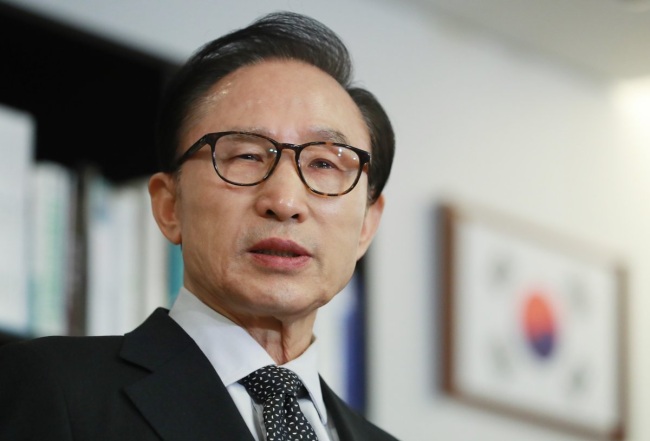Former President Lee Myung-bak, who has been summoned by the prosecution to be questioned over some 20 charges, remains a highly controversial figure five years after leaving the Blue House.
Nicknamed “bulldozer,” the 76-year-old was once praised for his single-minded approach and perseverance as a successful businessman before becoming the nation’s president, despite his questionable ethics.
A former head of Hyundai Engineering and Construction and ex-Seoul mayor, Lee became the first business executive to lead the country in 2008. He campaigned on a pro-market platform and won the presidential race despite allegations that he was involved in a stock-manipulation case.

Former President Lee Myung-bak (Yonhap)
His early months in office were marked by monthslong protests against the resumption of US beef imports, as Lee sought to ease regulations on US beef import as part of the process of ratification for the South Korea-US Free Trade Agreement concluded by his predecessor, Roh Moo-hyun.
He is also known for the controversial Four Major Rivers Project, a multipurpose “green growth” project involving four rivers in the country, which received significant criticism from environmental groups at home and abroad.
Many critics accused Lee of proceeding with the project, overriding environmental concerns, for the benefit of the construction industry, a sector where he had deep roots and connections.
His ruthless push for the swift approval of the rivers project, as well as the ratifying of the FTA deal in the National Assembly, among others, once again proved his “bulldozer” qualities.
At the same time, although such “bulldozer” approaches -- single-minded, "efficient" and arguably undemocratic -- may have helped him succeed in the corporate world, they may not have been suitable for the head of a state, according to his critics.
Last year, it was revealed that the Lee administration had blacklisted certain cultural figures since 2009, including acclaimed filmmakers Park Chan-wook and Lee Chang-dong, as well as political pundit Chin Joong-kwon. The list was compiled by the National Intelligence Service and was used to give them “various disadvantages,” such as banning them from TV appearances, for being “unfriendly” to the Lee’s administration.
One of the most tragic events that took place during Lee’s time in office was the 2009 Yongsan fire, during which a brutal government crackdown on people protesting eviction in Seoul resulted in the death of five protesters and one police officer.
Some say Lee deserves credit for his perseverance and hard work, especially during his early years. He rose from desperate childhood poverty -- he reportedly put himself through university by collecting garbage -- to become the chief executive of Hyundai Construction at 36. Both Lee and Hyundai were leading players in the country’s economic development in the 1970s.
Lee is also the man behind the now-restored Cheonggyecheon in Seoul, which flows through the heart of the city and functions as a public recreation space. Prior to the restoration project, which was launched during his term as Seoul Mayor (2002-2006), the stream had been covered over by a traffic-clogged elevated highway.
By Claire Lee (
dyc@heraldcorp.com)






![[Graphic News] More Koreans say they plan long-distance trips this year](http://res.heraldm.com/phpwas/restmb_idxmake.php?idx=645&simg=/content/image/2024/04/17/20240417050828_0.gif&u=)